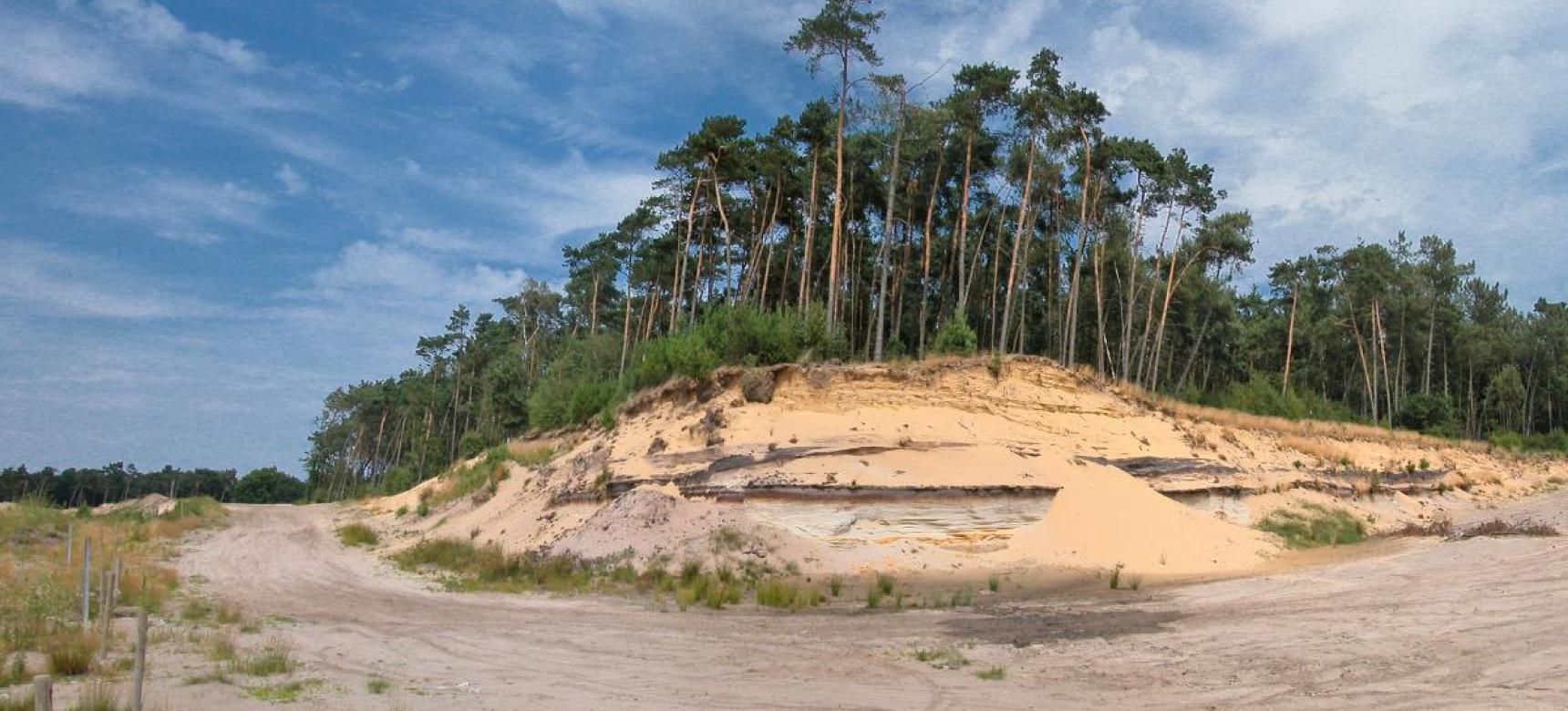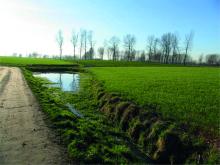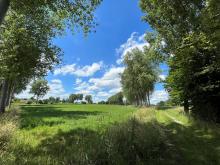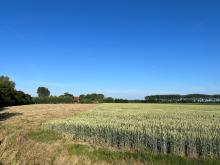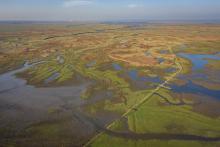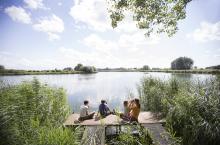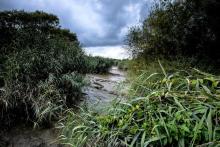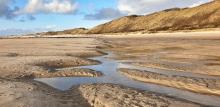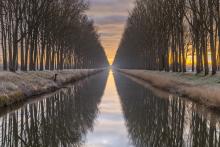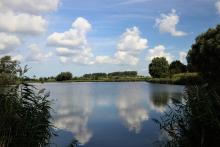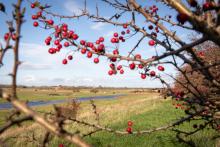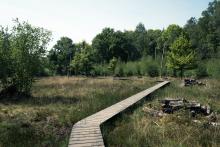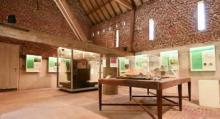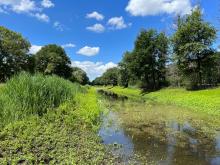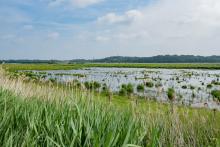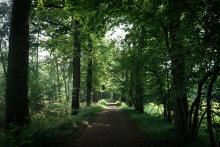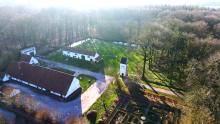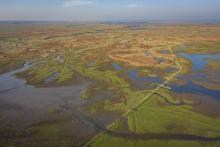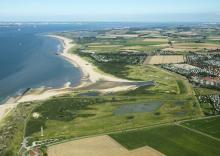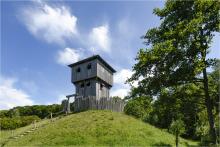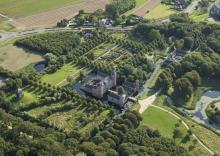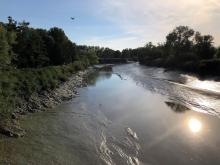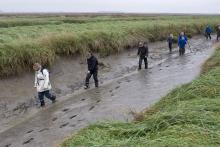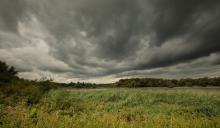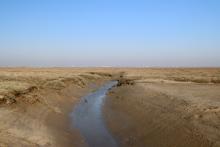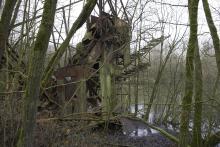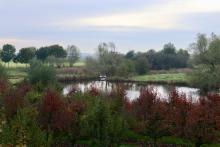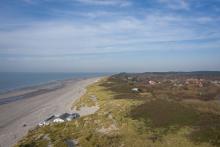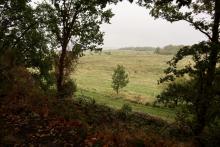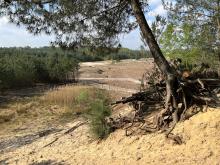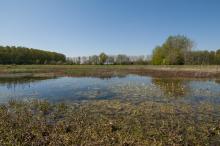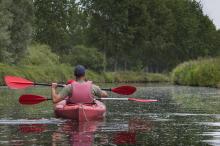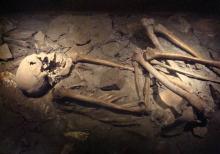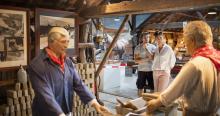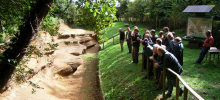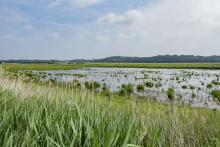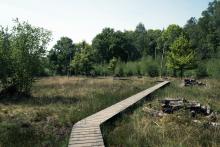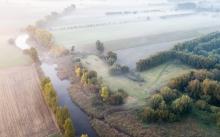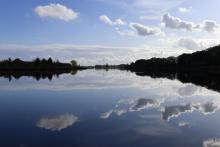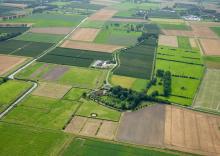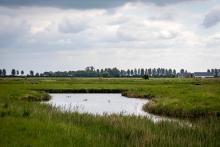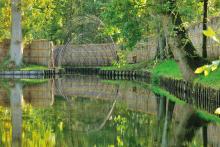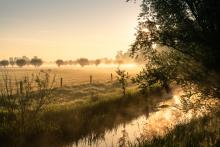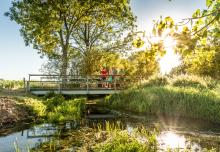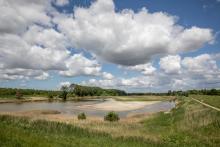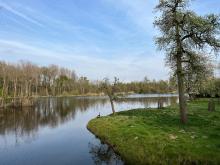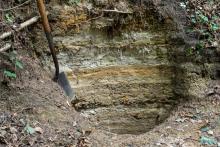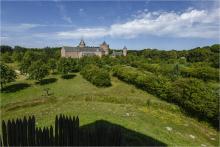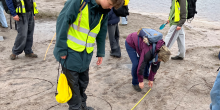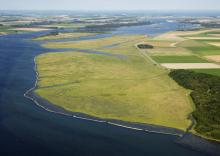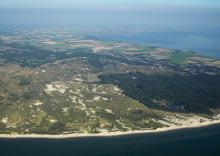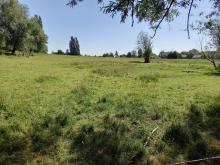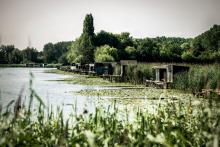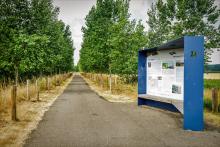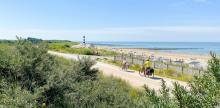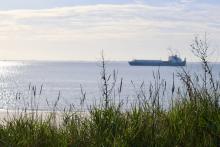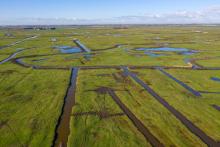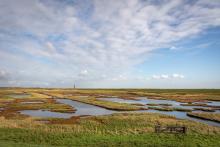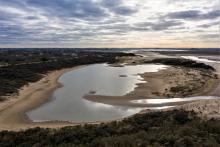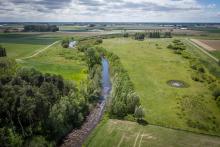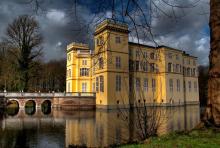Tropical sea to ice age
About 30 million years ago, the site of the Scheldt estuary was a shallow, tropical sea. Shark teeth from that time still wash up on the beaches of Nieuwvliet-bad, Ritthem and the Kaloot. After the sea retreated, some 3 to 2.5 million years ago, a coastal plain emerged into which rivers flowed. Traces of this coast can still be found in Nieuw-Namen/Kieldrecht near the Meester van der Heijden quarry. The river deposits are found in the Brabant Escarpment.
In the penultimate ice age, 280,000 to 130,000 years ago, the predecessor of the Scheldt created a deep valley system north of present-day Ghent: the Flemish Valley. This was later largely filled in and is now a low, flat and sandy area. As a result of erosion by the river, the northern side of the Flemish Valley eroded strongly, creating a landscape there with asymmetrical relief: the Oedelem-Zomergem Cuesta in Meetjesland, the Waasland cuesta and the Boom cuesta.
During the ice ages, the sea level dropped because water was stored in the ice caps. In the coldest part of the last ice age, about 18,000 years ago, the North Sea was even completely dry. From this plain, powerful winds carried sand, creating elongated blanket sand ridges.
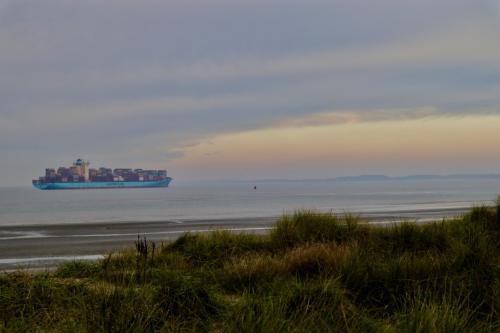
Coastal area
Due to the melting ice caps, the North Sea basin began to fill up again starting about 10,000 years ago. The coastal plain became wetter and peat bogs formed. As a result of continued sea level rise, the sea penetrated the area through gullies and drowned the peat bogs. When the sea level rise decreased from about 3700 B.C., mud flats and salt marshes developed in large parts of Zeeland. Along the coastal zone, sand barriers were formed that began to seal off the area behind them. On the sand barriers, the first dunes developed. Starting around 3000 B.C., the sea brought in a lot of sand, causing the sand barriers to grow. The area behind the sand barriers swelled. Here peat formation took place on a large scale.
Due to intrusions by the sea and drainage in Roman times, tidal creeks were formed in the peat landscape behind the old dunes from 300 AD. As a result, the peat area was washed away or covered with a layer of clay. This gave Zeeland its characteristic island structure. The influence from the sea reached to where the higher sandy soils begin in the north of Flanders.
The Old Scheldt
Shortly before the end of the last ice age, the Scheldt, Rupel, Dender, Durme and Lys flowed via the Flemish Valley into the then still dry North Sea basin.
Due to the accretion of the cover sand ridge between Maldegem and Stekene, the Scheldt, into which the Durme also flowed, was forced to flow north through the breakthrough valley near Hoboken to the dry North Sea plain. In 2 million-year-old soil layers, the river scoured out a steep ridge, the Brabant Escarpment.
During the Late Glacial (15,500 to 11,500 years ago), the shallow and broadly spreading Scheldt changed into a strongly meandering river system with a lot of water discharge. A characteristic feature of the meander pattern is that the outside of the river bends erodes, while material is deposited on the inside. As a result, the river course gradually shifts toward the outside of the bends. On the inside, crescent-shaped embankments (meander-valley ridges) formed with depressions in between. Peat growth filled up most of the old channels. Especially between Ghent and Dendermonde, large Paleomeanders of the Scheldt have been preserved. The best recognizable are those in Berlare.
River dunes, also called donks, formed at several places along the Scheldt.
About 5400 to 4300 years B.C., the Scheldt west of bergen op Zoom made a connection to the sea, the beginning of the present Eastern Scheldt.
Scheldt Estuary
During the peat bog phase, the Scheldt turned into a relatively narrow river. But intrusions from the sea caused significant widening from about 300 A.D. Dan again. An estuary came into being.
Presumably no earlier than the eighth century, the Honte, a creek that flowed into the Scheldt in the eastern part of Zeeland, became connected with break-in channels from the North Sea and the forerunner of today's Western Scheldt came into being. From the fifteenth/seventeenth century, this became the main course of the Scheldt. With the new, shorter connection to the North Sea, tidal action became noticeable further upstream in the river. Sea level rise and reclamation later reinforced this process. Today, tidal action is still noticeable upstream from Vlissingen for about 160 kilometers.
The course of the river also changed upstream. At the beginning of the thirteenth century, the Scheldt shifted its course to the west near Weert; the main stream then separated from the Old Scheldt.
Human intervention
From Roman times onward, but especially from the Middle Ages onward, man began to leave his mark on the landscape. At the beginning of the twelfth century, Zeeland and the north of Flanders started with large-scale embankments, after local defensive dikes had already been constructed in Roman times (see also storyline Living with the water). Thus came into being old land polders, such as the polder Walcheren, the polder Schouwen and the wide Wateringen to the west and east of Yerseke, which were characterized by higher sandy creek ridges and lower pool soils. In later reclamations, mud flats and salt marshes were often diked against existing polders (washes) or tidal flats (washes). This is how loose islands in Zeeland became connected.
Discover and experience
You can read about the geological history at the quarries in this area, including the Meester Van der Heijden quarry in Nieuw Namen and Boudewijn quarry in Ossendrecht, both of which are geological monuments. In Rumst there is an information point about the origins of the Boom clay. The Drongengoedhoeve in Ursel explains the geological history of the Zomergem-Oedelem cuesta. You can experience the rich variety of nature in the area in the nature reserves and landscape parks, including the cross-border Zwin region, border park Groot-Saeftinghe and border park Kalmthoutse Heide. At Overmere-donk and Berlare Broek the old Scheldemeand formation can be recognized by the water lakes created after peat extraction that follow the old meander and by the bumpy pattern of the meander ridges. Between Bornem and Weert you will find an almost intact thirteenth-century Scheldt landscape with a strongly closed character. The Drowned Land of Saeftinghe gives an impression of the unimproved salt marshes and mud flats that once characterized Zeeland. Creek ridges are recognizable in the landscape of Walcheren. Creek remnants can be found as Zwin, Zwake, Schenge and Passageule, among others. The Kop van Schouwen is home to a vast dune landscape.
